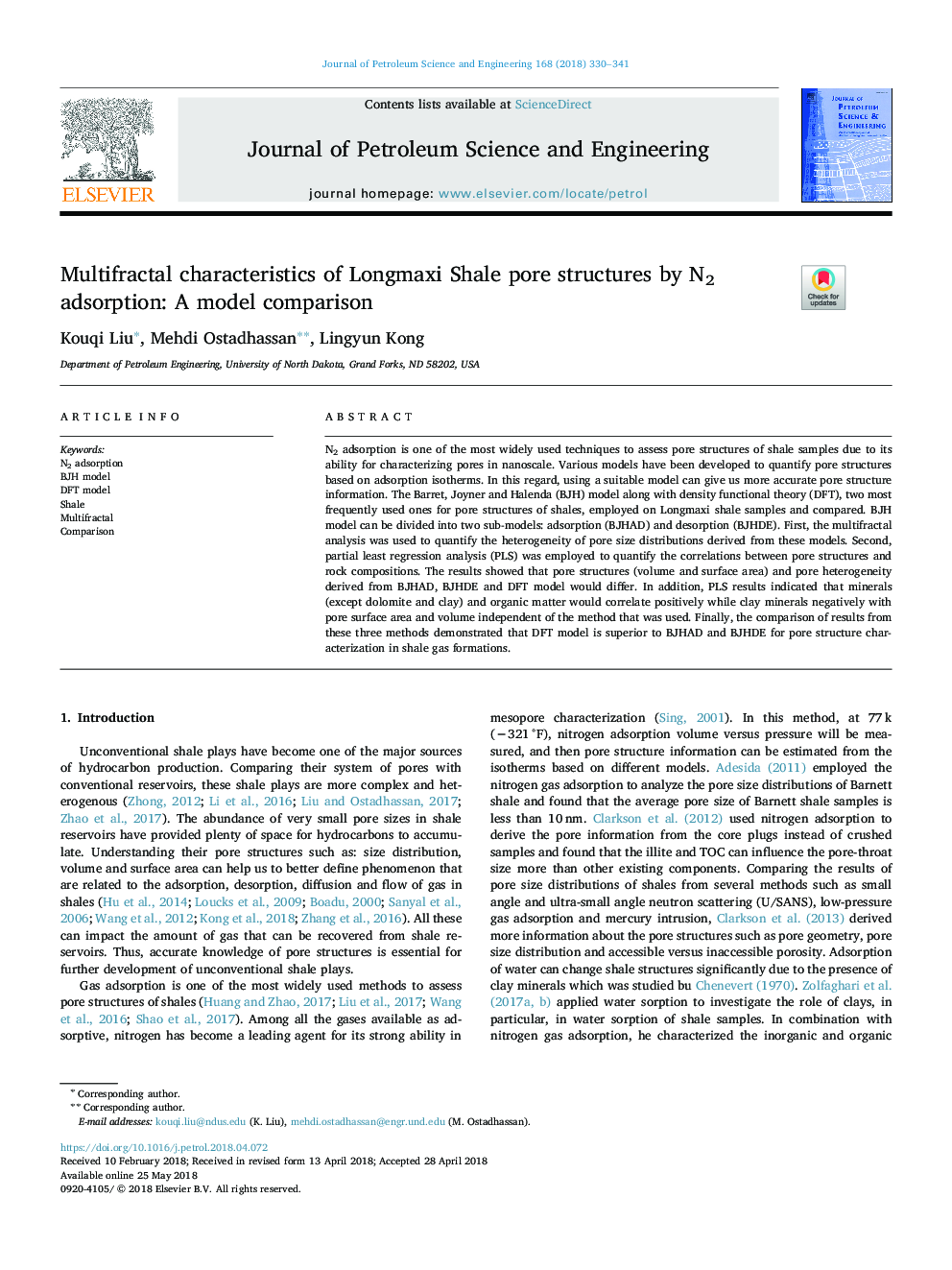| Article ID | Journal | Published Year | Pages | File Type |
|---|---|---|---|---|
| 8124696 | Journal of Petroleum Science and Engineering | 2018 | 12 Pages |
Abstract
N2 adsorption is one of the most widely used techniques to assess pore structures of shale samples due to its ability for characterizing pores in nanoscale. Various models have been developed to quantify pore structures based on adsorption isotherms. In this regard, using a suitable model can give us more accurate pore structure information. The Barret, Joyner and Halenda (BJH) model along with density functional theory (DFT), two most frequently used ones for pore structures of shales, employed on Longmaxi shale samples and compared. BJH model can be divided into two sub-models: adsorption (BJHAD) and desorption (BJHDE). First, the multifractal analysis was used to quantify the heterogeneity of pore size distributions derived from these models. Second, partial least regression analysis (PLS) was employed to quantify the correlations between pore structures and rock compositions. The results showed that pore structures (volume and surface area) and pore heterogeneity derived from BJHAD, BJHDE and DFT model would differ. In addition, PLS results indicated that minerals (except dolomite and clay) and organic matter would correlate positively while clay minerals negatively with pore surface area and volume independent of the method that was used. Finally, the comparison of results from these three methods demonstrated that DFT model is superior to BJHAD and BJHDE for pore structure characterization in shale gas formations.
Related Topics
Physical Sciences and Engineering
Earth and Planetary Sciences
Economic Geology
Authors
Kouqi Liu, Mehdi Ostadhassan, Lingyun Kong,
